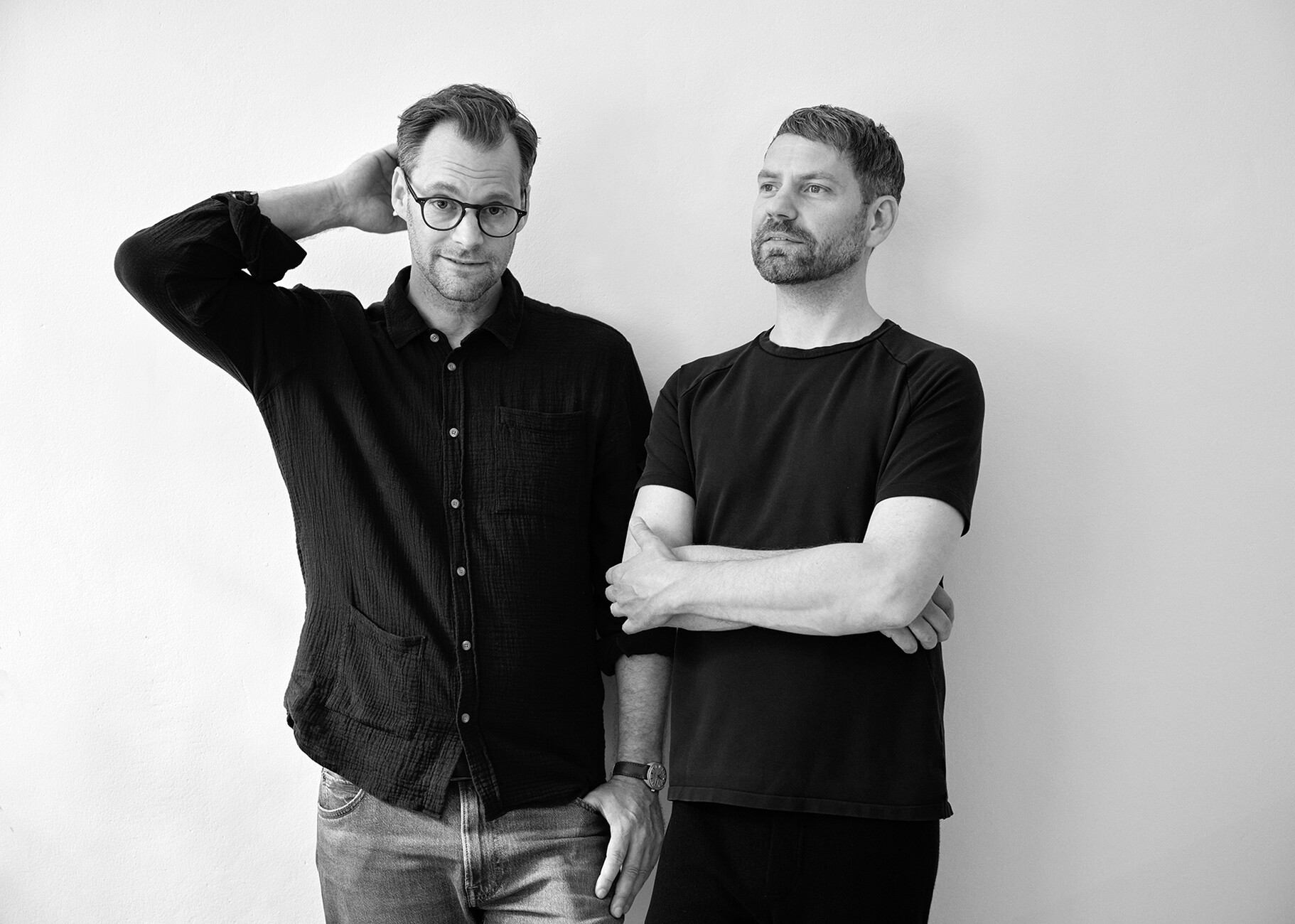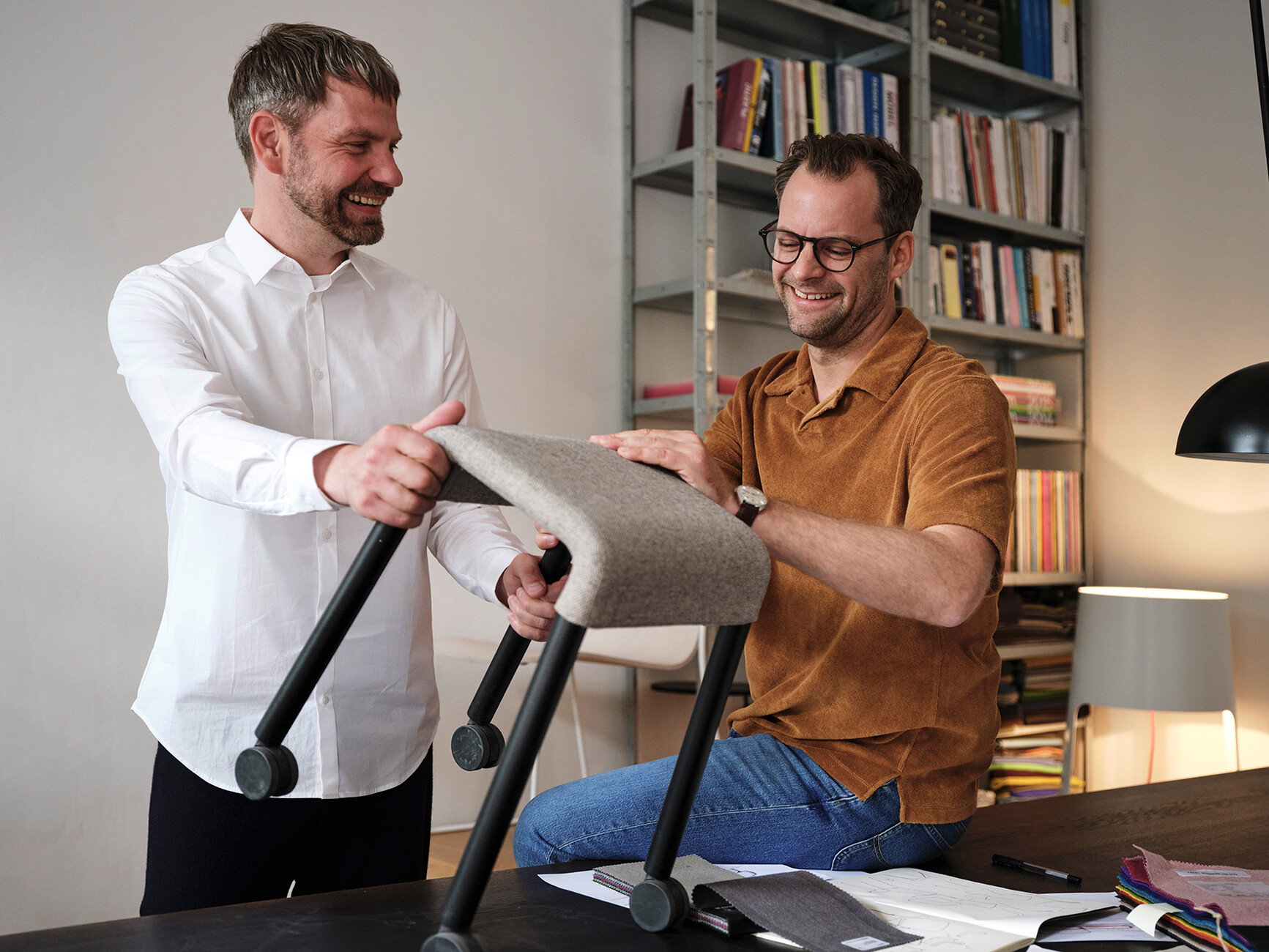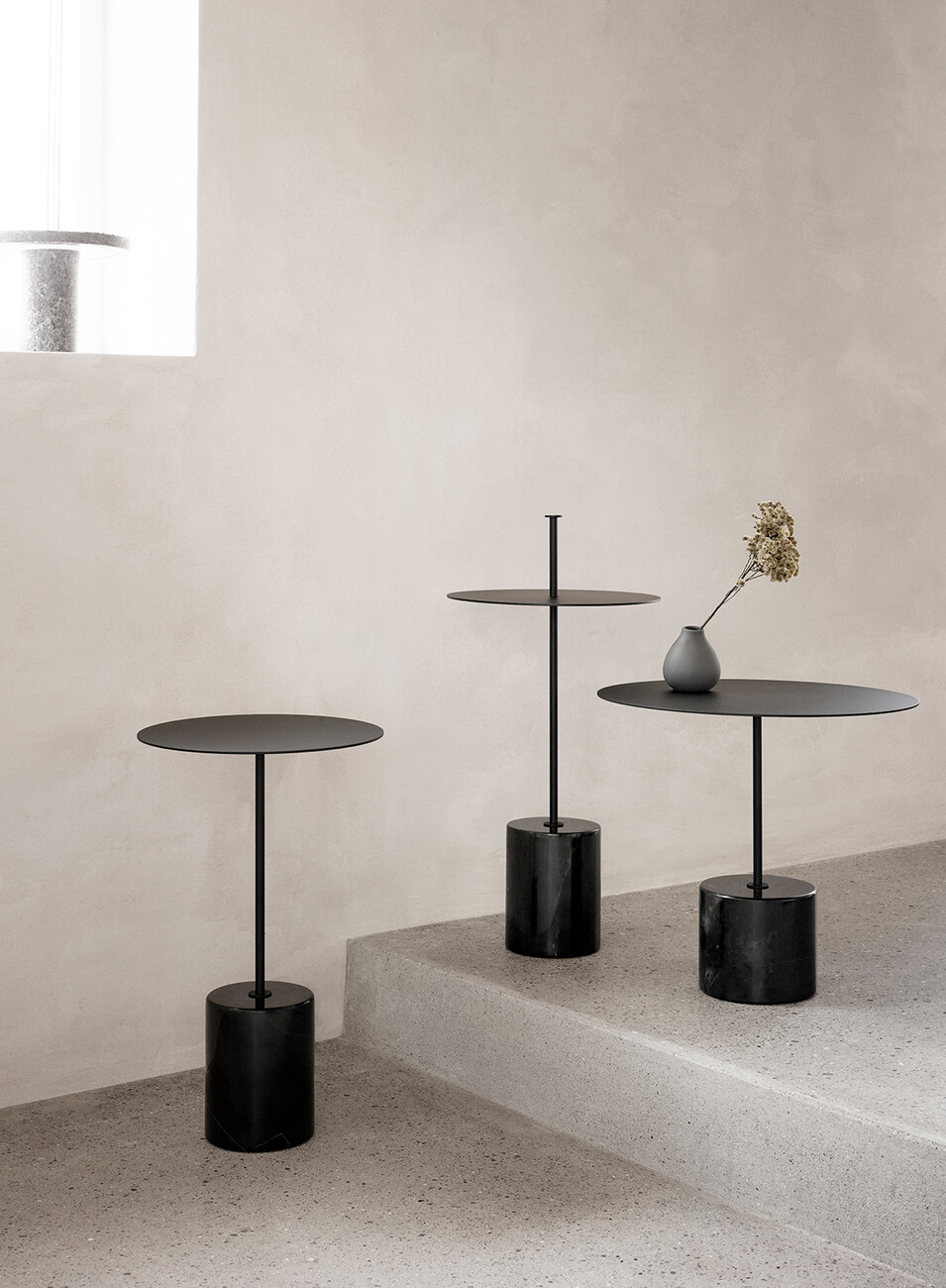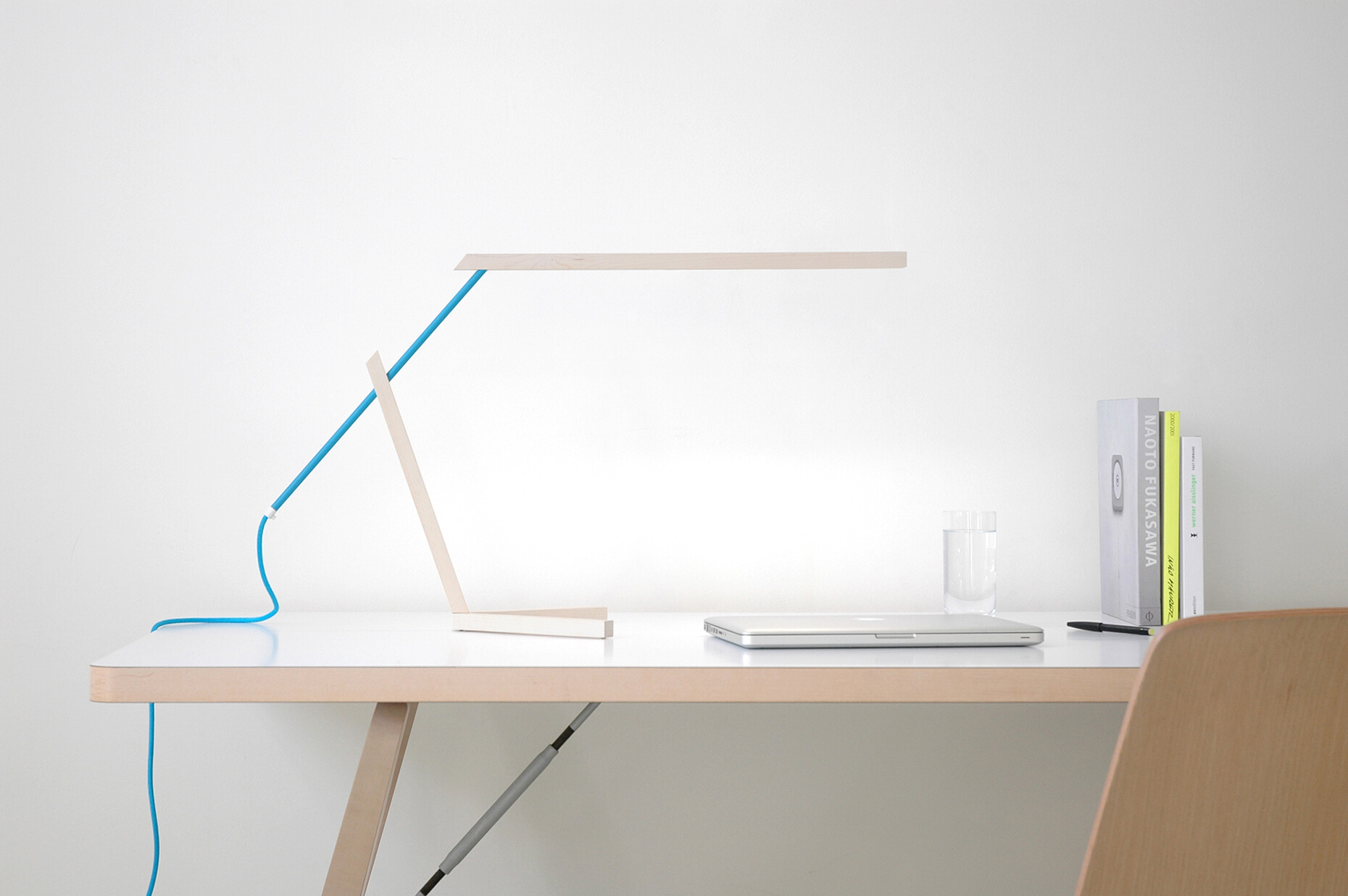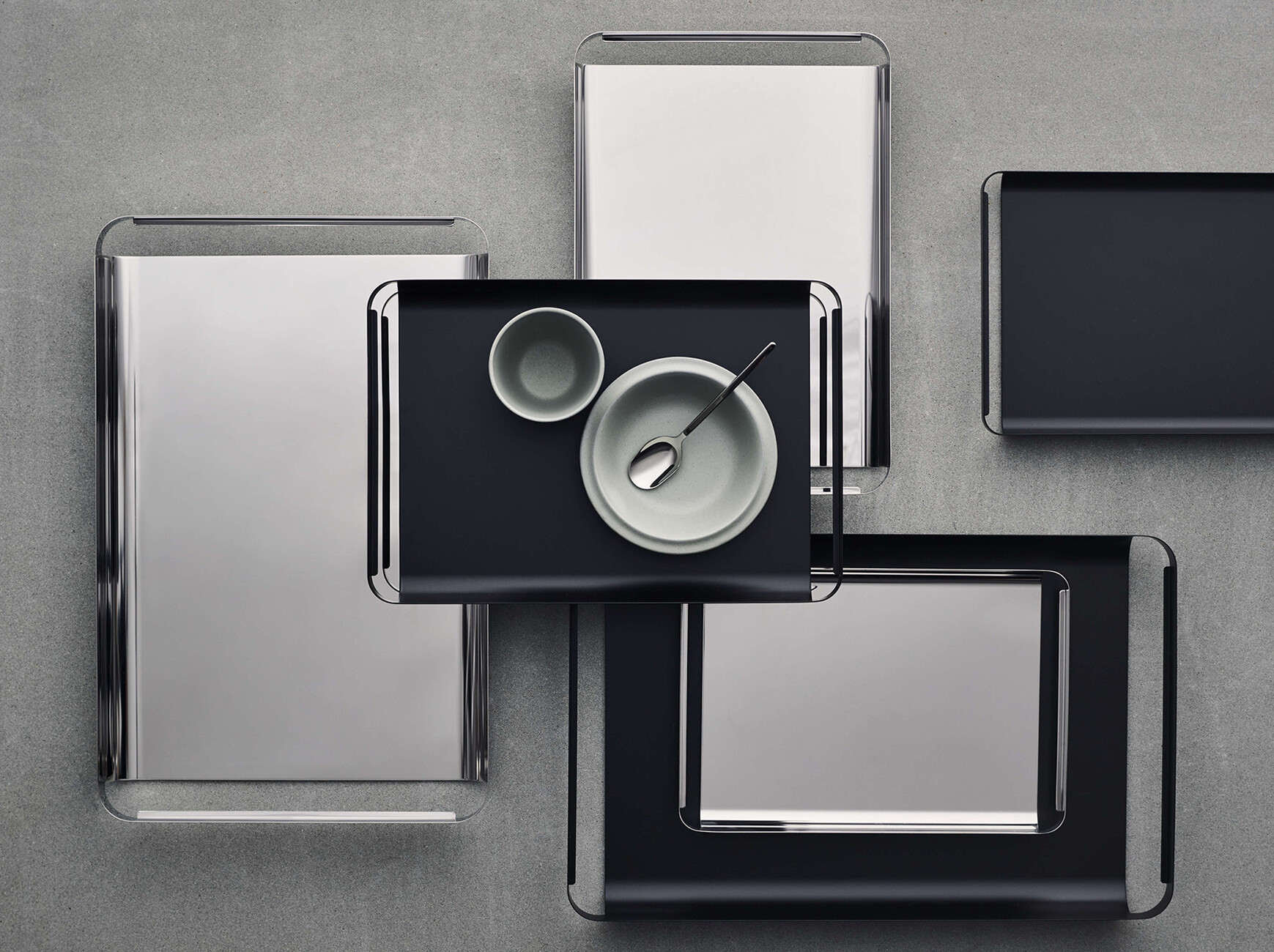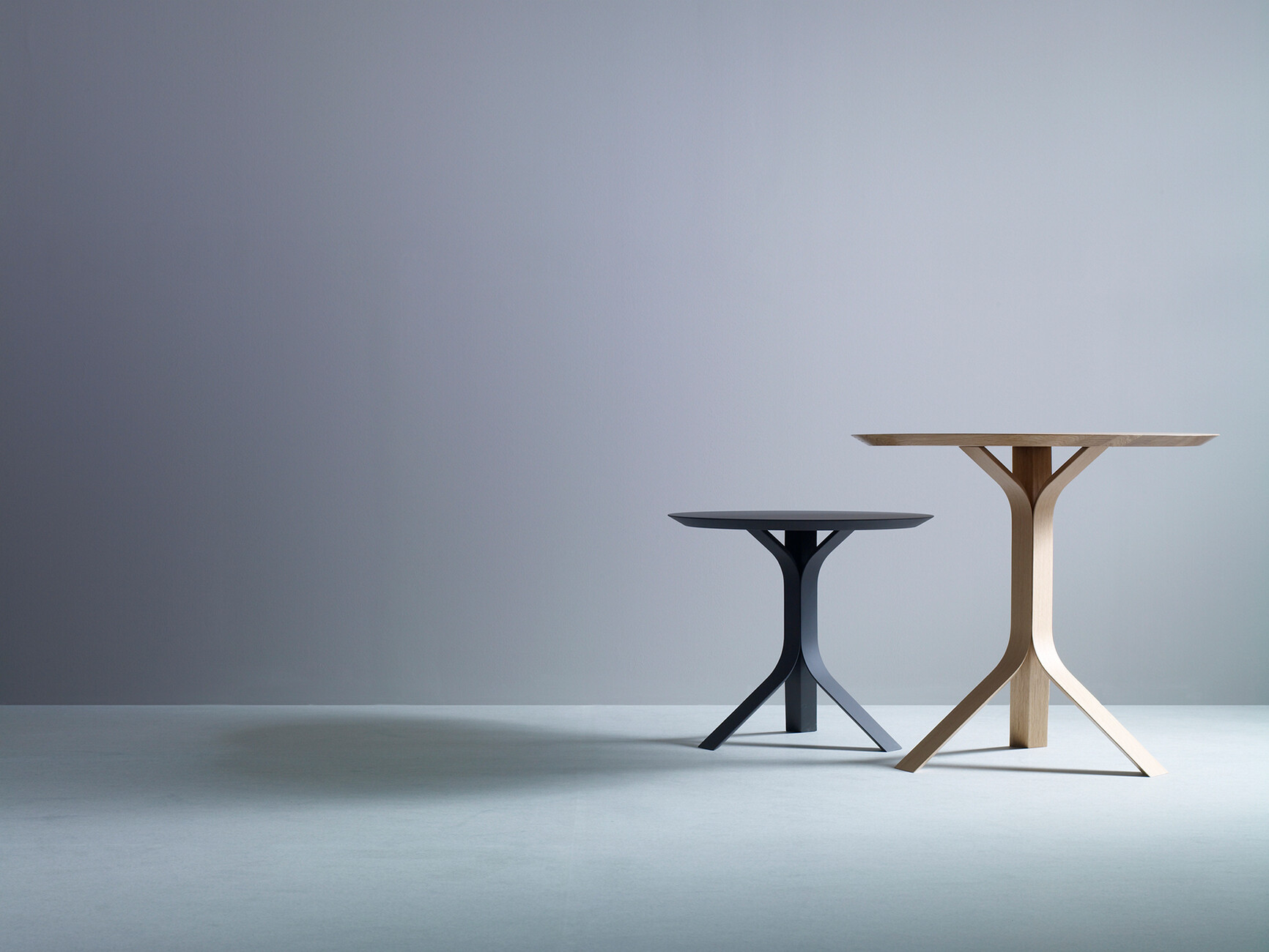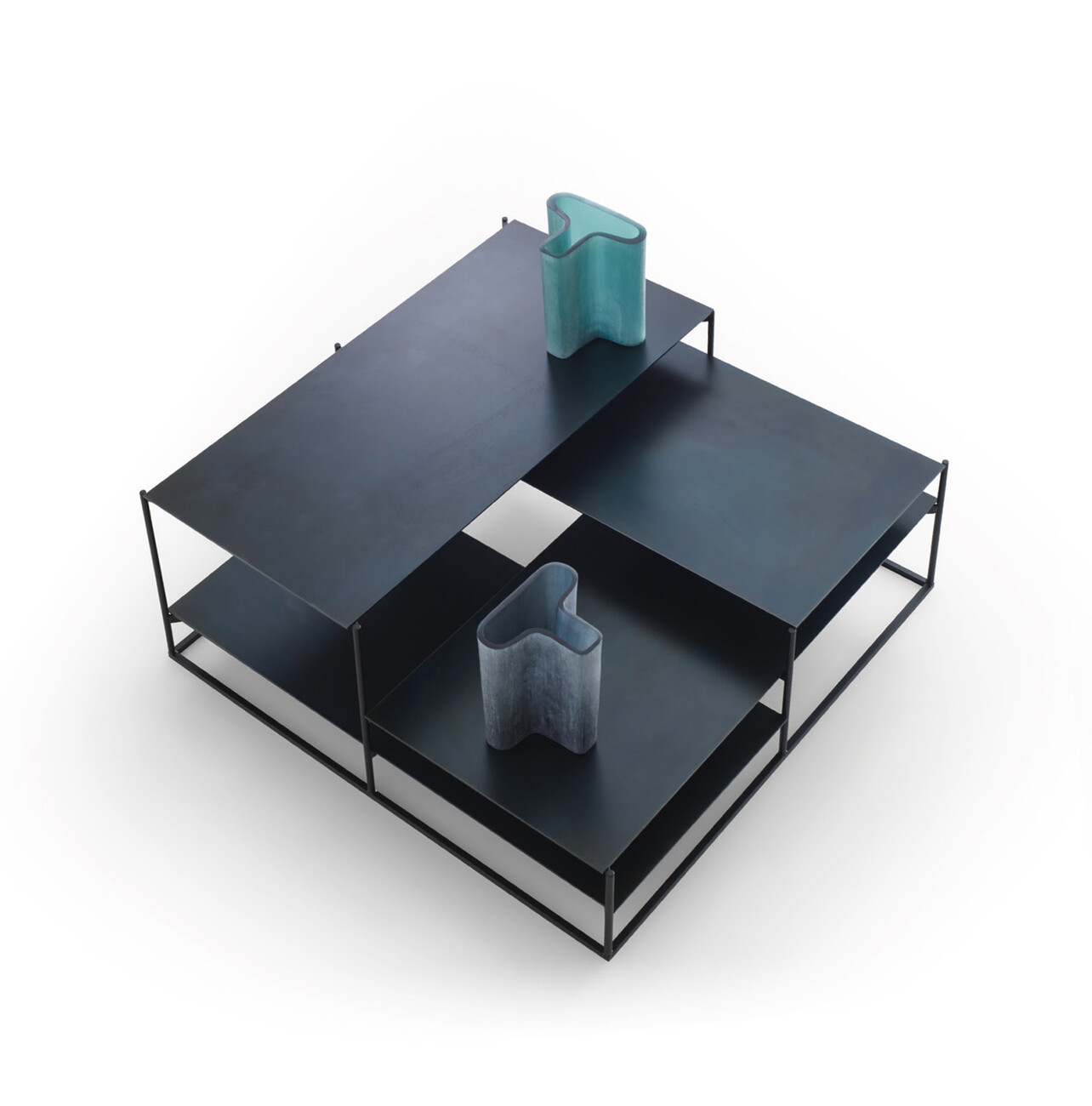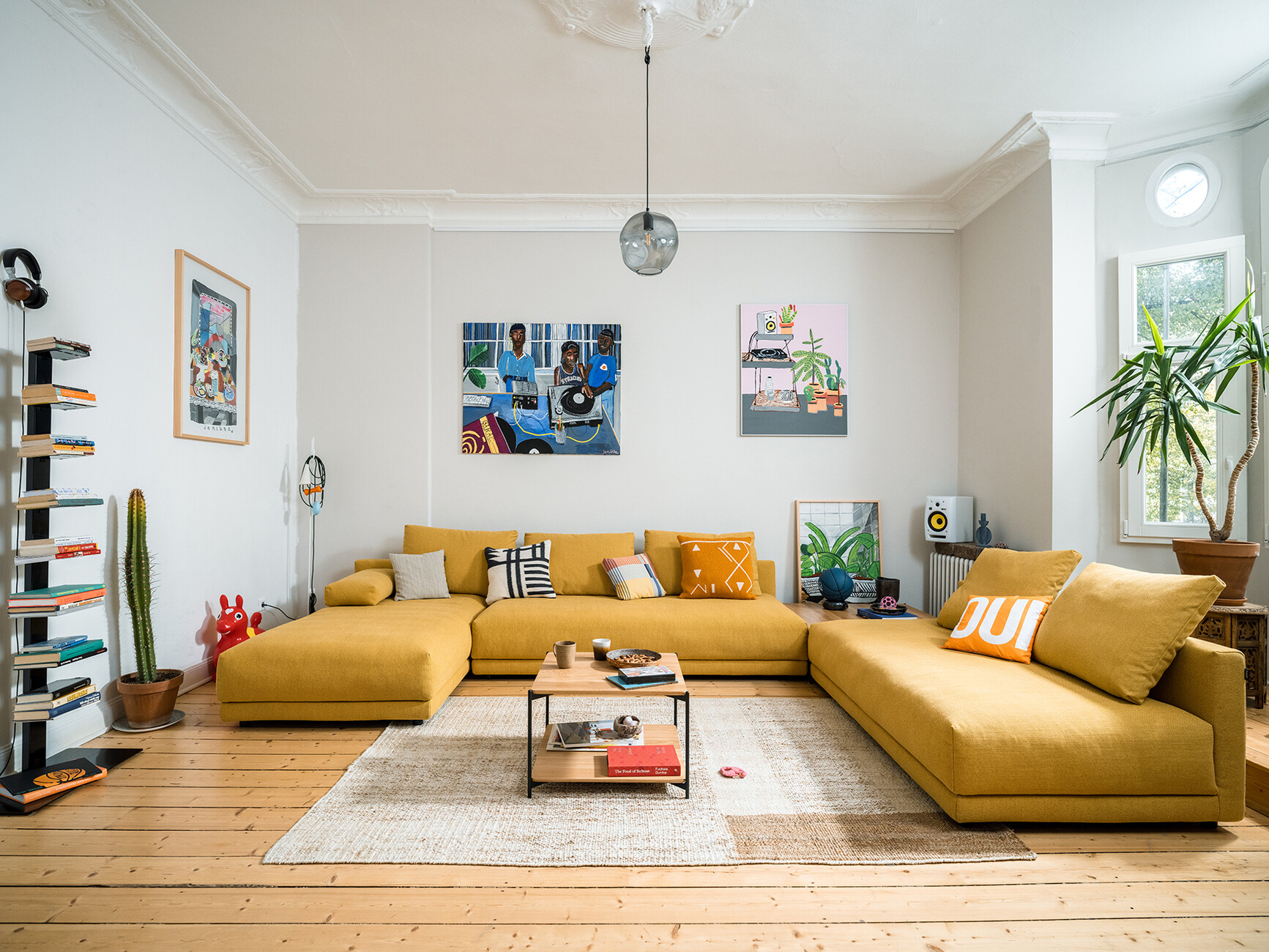Rethinking Products
Questioning conventional approaches, developing sustainable ideas, and pursuing clear and functional ideas – this is the philosophy of Berlin-based studio Böttcher & Kayser. While still youngsters, Moritz Böttcher and Nikolaus Kayser both dreamed of joint projects, and shortly before their respective 30th birthdays their professional paths finally converged. Be it coincidence or destiny, the fact that the two designers perfectly complement each other in their everyday work can be readily seen from the quality of the products they design, which have bagged such renowned accolades as, for example, several red dot and iF design awards, the Interior Innovation Award, not to mention the red dot "best of the best".
Linda Pezzei: How or why did you team up?
Nikolaus Kayser: Well, we’ve actually known each other since kindergarten and went to school together. Then we went our different ways. However, we stayed in contact and continued to keep tabs on each other. In actual fact, we have always dreamed of working together on projects one day. After graduating and several jobs, in 2013 we seized the bull by the horns and founded our own design studio in Berlin. Since then, we’ve been busy working for various German and international product and furniture brands.
You both studied Industrial Design and yet brought different professional experiences and skill sets to the new company. So how do Böttcher & Kayser supplement each other as a team?
Moritz Böttcher: Niko first trained as a cabinet maker and then went on to study Industrial Design at the Muthesius Kunsthochschule in Kiel. I for my part graduated in Product Design from the Hanover University of Sciences. I then spent a few years working in classical industrial design in the Netherlands, Hamburg, and Frankfurt, in fields ranging from medical appliances to sports goods. After that I spent several years with Studio Werner Aisslinger in Berlin where I first immersed myself in the world of furniture design and so-called studio design.
Nikolaus Kayser: I got a job with Wiege Entwicklungsgesellschaft at Wilkhahn, and while working for them amongst other things I focused my attention on all kinds of chairs, specifically office swivel chairs.
Do you generally tend to work together on all aspects of a project or do you divide up the tasks in some way?
Nikolaus Kayser: Each of us works on different projects. In each case, one of us is the lead. However, we constantly coordinate things very closely and in the course of a project essentially discuss all aspects of it. So, yes, basically we work together on the tasks. That said, during the design process each of us brings different tools to bear.
Moritz Böttcher: For example, Niko is better and faster with the 3D programming. I am perhaps better when it comes to drawing. During the design process, however, we are both involved in practically all stages of a project, and are repeatedly sitting down together, in order to discuss the details or the big picture.
Fundamentally, how do you approach a new project? What inspires you?
Nikolaus Kayser: If there is a specific enquiry as regards a design, meaning the topic has been set for us, we tend to take a fairly classical approach: We do extensive research, check the market setting, the references. Then we generate as many good ideas as possible and finally we develop the shape and look.
Moritz Böttcher: We never start from scratch. We meanwhile have a large reservoir of experiences and impressions in our heads, consisting of everything that we see at trade fairs, on our travels, or elsewhere in everyday life or on the Net, for example. Another thing that happens a lot though is that one of us has an idea for a product without us having been commissioned to create the design. That person then usually elaborates on the idea in the form of sketches until it reaches a stage where we can discuss it internally. And such ideas can come from anywhere: A discussion with a manufacturer or distributor, a stroll around a flea market, an art exhibition, or a post on the Web … Usually, the inspiration is not directly connected in any way to the final result. Meaning, a sculpture can inspire a piece of seating furniture, or a graphic stimulate the idea for a grid or a set of shelves. And there are differences here, too. The idea may have been inspired by a shape, or possibly by some functional aspect.
Nikolaus Kayser: Then for us, internally speaking, the next thing is to discern the quality and potential of an idea in order later to work on it so that in the end we have as far as possible derived only the good sides from it. In the best possible case, an idea improves with every discussion. It is not that rare for one of us to strongly influence an idea that actually the other first came up with. It is constantly exciting to experience such a process that is never like something before and of course does not always lead to the desired goal.
How important is it to really know the client or brand well, and understand them?
Nikolaus Kayser: That is generally important, but not always what is critical. Some designs are simply good, almost universally applicable. Then it is not so decisive whether we know a brand particularly well or have close links to the customer. Usually, it’s all about the production possibilities or, today, about the production partners and suppliers. Today, many young brands hardly make anything themselves, but instead rely on a more or less broad pool of international partners some of whom are really good, specialized, experienced… Though such brands are then more flexible and versatile in what they can do to a certain extent they cannot actually control everything themselves.
Moritz Böttcher: Which is why it is invaluable to have a good, long-standing relationship to your customer and know his strengths and weaknesses. Over time this means we can better understand what customers need, what they are able to manufacture, and also what they are able to sell. After all, at the end of the day not every design, however great it may intrinsically be, is the right one for that particular customer.
Who are your clients?
Nikolaus Kayser: We collaborate with different companies, such as Johanson Design, Decibel, Freistil by Rolf Benz, Gejst, Ligne Roset, Wendelbo, Stelton, Bolia or Northern, for example. However, many of our products did not come about because of our being commissioned in the classical sense. Some companies simply opt for briefings, and we are not necessarily the only ones working on a project at one and the same time and using the same information. Nonetheless, we do of course get hired directly by companies or have received enquiries that have led to great products with existing partners, or over the course of time have evolved into strong partnerships. Frequently, however, things start with ideas and designs we came up with on our own. In part, during that process we already have a particular firm in mind. So we then approach a potential company with a more or less finished product design in order to kick off a new collaboration or give greater depth to an existing one.
When do you joyfully take on a job and when do you possibly also turn a project down?
Nikolaus Kayser: As a matter of principle we welcome any enquiries that are somehow connected to product design in the broader sense. Whether we then agree to take on a project or turn it down depends on various factors. What is crucial for us is always mutual trust and respect, and that a task can lead to a meaningful outcome. We tend to reject a project if the one or other of these points is not given.
Moritz Böttcher: A classical contract tends usually to be an enquiry. It is not always clear from the outset whether the outcome will be a product. At any rate, it’s an advantage to know the company already as this tends to produce a productive dialog more swiftly.
A current project you are working on at the moment?
Nikolaus Kayser: In addition to many expansions and additions to existing products at the moment we’re focusing intensively on the topic of acoustics and sound absorption in rooms. We’re interested in solutions that can be smoothly integrated into existing buildings. We feel there’s a lot of scope or design here as well as strong demand. Together with our partner we’ve found an outstanding basic material which we are now using for good products that can in turn be seamlessly installed in existing premises. In such situations we collaborate closely with our customer and frequently discuss things in order to take market insights and requirements into account to the best extent possible and reflect this in our designs.
Moritz Böttcher: Another exciting project is our temporary cooperation with luminaire designer Fabien Dumas. We’re longstanding friends and wanted to have fun experimenting. The three of us dug up some old designs and in the process we decided he would tinker away at one of our designs and we would do the same with one of his. Since then, we’ve made headway and there are tangible results. It’s fascinating how different people’s take on things can be and how we inspire each other. It’s still completely open as to where this will lead.
A project you really want to realize?
Moritz Böttcher: Well, it is possibly not about just the one project. There are so many exciting tasks and opportunities that we look forward to taking up. If we were to have one wish, it would definitely be to design a product that really spares resources, and which can be manufactured in a carbon-neutral manner. It should also be possible to completely recycle it after the end of its service life so it would at no point place a burden on the future of the planet. We feel that there’s an obligation on us as designers here. We’re also keenly aware that we’re in a kind of dilemma in this regard and we actually need firstly to question the need for each new product because it will require resources and will therefore automatically have a negative impact on the planet. We’ve already realized many good ideas in this regard, but they are of course nowhere near enough. What we do see is that manufacturers are increasingly taking the topic seriously. Meaning there are, we feel, grounds for optimism that progress can be made.
Would you still study Design today, or recommend young people to do so?
Nikolaus Kayser: Yes, absolutely! Of course, we are now much more aware of what things count most later. And it’s also always a matter of the direction you take as a designer. I would advise people to work for a few years with other designers or in design practices after graduating so as to continue learning, gain new experiences, and then find their own path.
Moritz Böttcher: We both really appreciate our jobs and our profession, because product design continues to offer you an incredibly varied everyday life – even if you are self-employed. To have the opportunity to question things, to rethink things, in the final analysis to create things from the bottom up, to make them better at the micro or macro-levels, for us that is simply a meaningful activity, something we forever like championing. Designing something well is hard work, but it is also an immense source of joy.
